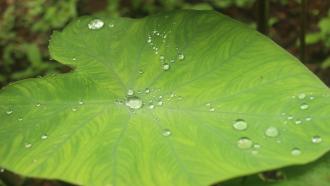
As the world grapples with the consequences of climate change, conversations about its ramifications are everywhere. The news often focuses on obvious calamities: melting glaciers, heat waves, and rising seas. Yet researchers from the Center for Ecological Sciences at the Indian Institute of Science (IISc) have uncovered a more subtle but equally significant link between environmental shifts and public health: the ways that changing temperature and precipitation can alter snake venom.
Specifically, by investigating Russell’s viper (Daboia russelii), a species responsible for a large number of snakebite deaths, the researchers found that the variability in venom composition may be tied, in part, to local climate conditions. Their discoveries show how global weather patterns might influence snake behavior, venom potency, and, ultimately, affect human lives.
As part of this work, the research team looked at 115 venom samples taken from adult Russell’s vipers across India, spanning a sampling region that covered nearly all corners of the country’s diverse habitats. They gathered small volumes of venom from adult snakes, either from single individuals or small pooled groups. Each sample was flash-frozen in liquid nitrogen before being stored at very low temperatures. The mixture was later freeze-dried (lyophilised) to ensure stability. This allowed them to preserve the venom’s biochemical integrity long enough for an array of laboratory experiments.
Once they had the samples, the researchers employedbiochemical assays to identify how well different venom enzymes function in different parts of India. The enzymes measured were phospholipase A₂ (often abbreviated PLA₂), proteases, and LAAO (L-amino acid oxidase). PLA₂ is known to destroy cells and release molecules that can lead to severe inflammation in snakebite victims. Proteases break down proteins and can cause tissue damage and problems with blood clotting, while LAAO can trigger cell death and a range of other symptoms including bleeding complications. In short, these three enzymes cover some of the biggest clinical concerns following a Russell’s viper bite.
Through testing, the team could see that venom from some regions showed much higher levels of PLA₂, especially along the eastern and western coastal areas. In contrast, other regions display elevated proteolytic activity, notably the drier northwestern parts of India. Meanwhile, LAAO levels seemed to show more modest climate-related variation, suggesting that particular parts of the venom cocktail may be more sensitive to temperature or precipitation changes.
Connecting these biochemical details to climate data required additional computational work, so the team turned to linear and multiple regression models to interpret the relationship between local weather conditions, like temperature, seasonality, annual precipitation, and other factors, and venom enzyme activity.
First, researchers ran simple linear regressions, asking whether any single climate factor could account for venom differences. This approach gave them an initial glimpse that precipitation seasonality had some impact on PLA₂, while no single variable alone could fully predict proteolytic or LAAO activity. They then used multiple linear regressions to feed in numerous climate variables at once, ultimately painting a more robust picture of how temperature ranges, rainfall patterns, and the variability of these factors across seasons might combine to shape venom biochemistry. Proteases, for instance, seemed influenced by a complex network of temperature and precipitation conditions, so it took several variables at once to produce a useful predictive model.
By merging the regression-generated equations with real-world climate data in a mapping program, the researchers produced a color-coded layout that indicates which areas are likely to harbor more proteolysis-heavy venom, which might see elevated PLA₂, and which appear to have a more moderate venom profile. In an era when new weather extremes appear with unsettling predictability, this technology suggests that venom potency could be dynamic rather than static, shifting as climate patterns alter temperature averages or precipitation trends.
Before this study, research on venom variation of Russell’s viper was often confined to specific regions or influenced by dietary factors, like what prey items the vipers consumed and genetic diversity. Those aspects matter, but diet and genetics are only part of the story in a place as large and environmentally varied as India. This new work breaks ground by examining how temperature oscillations, precipitation amounts, and other climatic variables can drive differences in venom composition, thus adding detail to existing data that typically link diet or genetics to venom changes.
The models, however, are not yet precise in their prediction and do not capture every aspect of venom variation, since they explain only a fraction of the total enzyme variability. The wide range of venom effects, going beyond the three measured enzymes, might hinge on other factors not accounted for here. There is also a need for caution in extending these results to other snake species with very different ecological requirements or venom chemistries. Moreover, as the researchers note, environmental effects are holistic, and it is rarely just one variable, like precipitation or temperature alone, but a bigger interplay of climate, ecology, diet, and even local predator-prey dynamics.
Regardless of these caveats, the findings not only show that environment and weather patterns can coincide with changes in venom composition, but also offer a way to predict what might happen in places lacking direct venom measurements. Reliable knowledge about regional venom variation can translate directly into public health gains, particularly in a country where Russell’s viper bites cause many deaths yearly.
This research article was written with the help of generative AI and edited by an editor at Research Matters.






